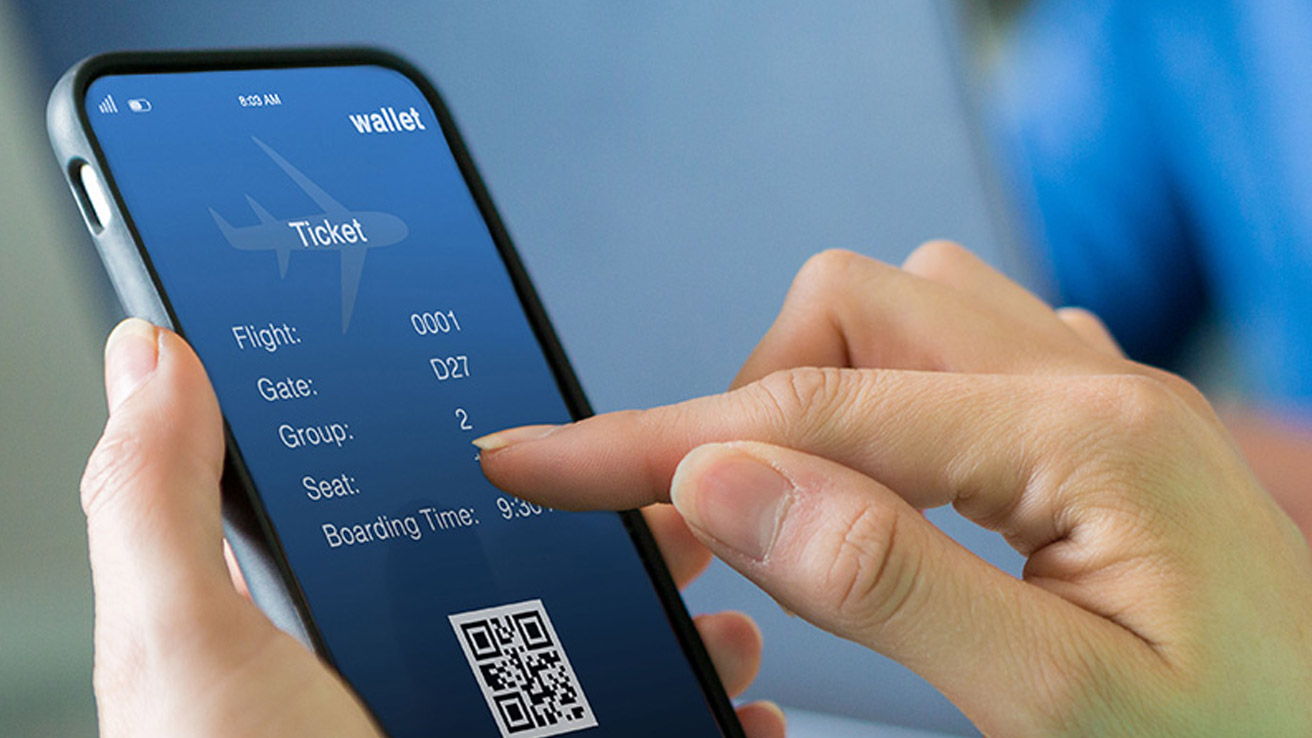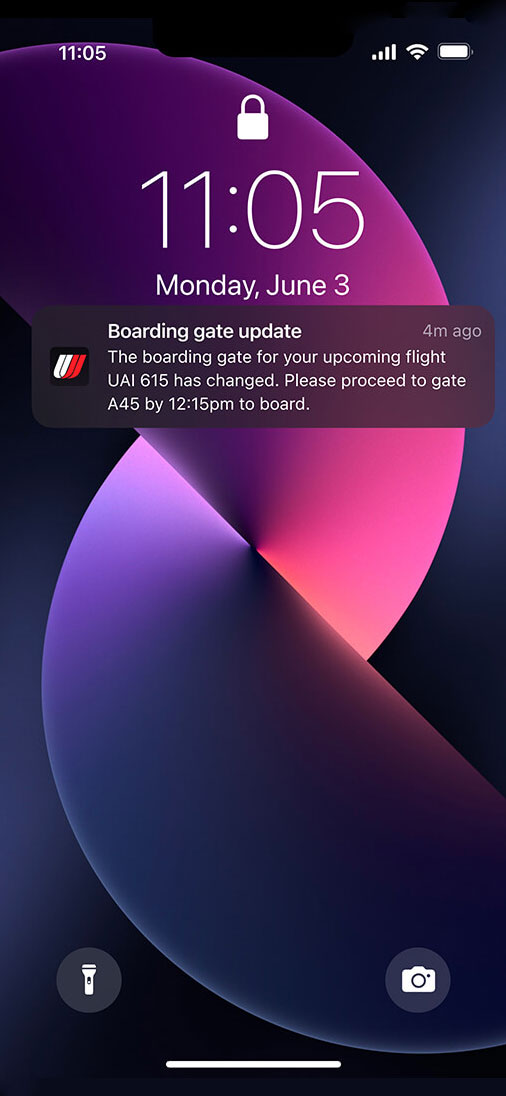3 ways airlines can automate passenger communications to manage travel disruption
When travelling, there is nothing more frustrating to a passenger than being delayed, and the aviation industry is particularly vulnerable to travel disruption.

Contents
Natural disasters, overbooking, strikes, technical problems, and delayed pilots, are just some of the challenges airlines face when trying to ensure flights depart and arrive on time.
Demonstrating the sheer scale of the challenge, flight delays in Europe more than doubled last year, with airlines and air traffic controllers failing to hit EU performance targets. On top of this rising number is the fact that while small delays are a regular occurrence, big delays that disrupt thousands of passengers are newsworthy. A recent example is the chaos at Gatwick airport over Christmas. Covered heavily by UK media, over 150,000 passengers had their flights cancelled or delayed due to a drone incident. Over this period, passengers received little or no information, leaving them to wonder if their flight would depart, whether they should travel to Gatwick, and if their flights could get re-allocated to another airport.
With digital and mobile messaging channels becoming an established way for brands to interact with customers, there is an opportunity for forward-thinking airlines to use digital messaging channels like Apple Messages for Business or Facebook Messenger, chatbots and new communication automation software, to create and deploy passenger communication solutions that supports airline disruption management.
Solutions that keep customers up to date, ensure they get to their gate on time, increase operational efficiency, and act as a brand differentiator that turns potentially negative experiences into positive outcomes. Here are 3 passenger communication solutions that form part an effective travel disruption management strategy:
1. Real-time airline notifications via SMS or Messenger Apps to keep passengers updated
There is so much potential for airlines to utilise real-time communications to minimise passenger-caused delays and improve customer access to information.

Before and on the day of travel, engagement could be as simple as delivering weather, traffic and public transport updates to help passengers plan for any delays that could stop them getting to the airport on time. If a flight is already suffering from severe delays, a notification could be sent to passengers to stop them arriving at the airport, which is a recurring scenario that airlines must remedy.
When the passenger does arrive at the airport, an SMS notification could be triggered with the link to the airline’s app for instructions on where to go, how to use new self-check-in systems, and a map of the airport. In-app push notifications can also be used to send real-time notifications on gate numbers or how best to get to the gate. Updates on flight status, changes to boarding gates, diversions, connecting flight information, cancellations, and what’s caused the disruption, can also be deployed on the passenger’s preferred communication channel – whether that’s Twitter, WhatsApp, SMS, or in-app push.
Such alerts and notifications help keep customers updated, set expectations for departure and stop them from calling the airline or airport due to a lack of information. They are essential to not only improving customer experience but also reducing unnecessary calls into the contact centre.
2. Two-way messaging to manage and resolve disruption
The next part of effective airline disruption management and passenger communication is turning real-time notifications into interactive customer journeys that help to manage and resolve disruption through two-way messaging. Exploring emerging digital channels like RCS (Rich Communication Services), a passenger could receive a notification telling them that their evening flight has been cancelled. Using RCS’s rich media features, the passenger could then use list-pickers and carousels to re-book their flight, search through a selection of contracted hotels to book a room for the night, organise a taxi home, and more.
Two-way messaging can also help airlines to engage passengers to help manage day-to-day flight operations. A passenger could respond to a notification about a connecting flight’s gate number, informing the airline and team at the airport that they will be late to the gate. From there, the airport team can determine next actions, sending the passenger a notification about the airline’s policy for keeping the gate open and next steps if they miss the flight.
3. Automate frequent customer enquiries into the contact centre using a chatbot
When a passenger is left in the dark about any potential disruption, one of the first actions they will take is to call the contact centre to gain clarity on the situation. However, when flights are delayed, the contact centre agent won’t necessarily have access to all the information that could provide the passenger with clarity. Instead, calls will clog the contact centre and passengers will receive a poor customer experience due to long queue times and the agent not having access to adequate information.

Automating communications to such frequent inbound calls during peak times via a chatbot can help airlines to capitalise on the self-service trend. Airlines can provide passengers with a ‘virtual assistant’, positioned as the main source for information that can help throughout the travel experience. Using the virtual assistant, passengers could easily submit their details to receive the latest updates on their flights, find out where their luggage is and much more.
The virtual assistant can also improve and simplify the compensation process for delayed or cancelled flights. Passengers could use a chatbot to submit all necessary information, such as flight numbers and airport car parking tickets, that can be analysed in real-time and with basic checks being applied to the claim. With AI working in the background, simple compensation claims can be approved for quick resolution, while those deemed complex or high priority are passed to a customer service agent, who is plugged directly into the conversation to take-over the enquiry, regardless of the channel.
With consumer interactions continuing to shift to messaging-based channels, an airline’s ‘virtual assistant’ could grow to become one of their most important customer touchpoints for enabling self-service, improving CX, and deflecting inbound enquires to digital channels
Get our Virtual Assistant Case Study, which details how a chatbot helped reduce the number of enquires handled by customer service agents by 25% within 3 months.
The need for an Enterprise Cloud Communication Platform
Airlines must evaluate the use of real-time notifications, two-way messaging and chatbots to not only manage disruption and proactively engage customers but to create a seamless digital customer experience.
But to orchestrate such an experience, airlines need access to real-time data on flight status, gate status, weather, luggage, customer service operations, local hotel rooms, and much more, that’s contained in their own, the airport’s, and other third-party systems. They need to be able to utilise the data in each system to trigger, contextualise and personalise automated communications. To do this, airlines should explore Enterprise Cloud Communications Platforms to accelerate the development of communication initiatives and enable end-to-end automation.
Using a Cloud Communications platform such as Webex Connect, airlines will be able to centralise the numerous integrations needed for system and customer data to be used in orchestrating the delivery of personalised and contextual communications across multiple channels.
If you are an airline who is struggling to manage disruption, centralise siloed business systems and deploy joined-up communications, please get in touch or contact me using Jeremy.Dexter@imimobile.com.
